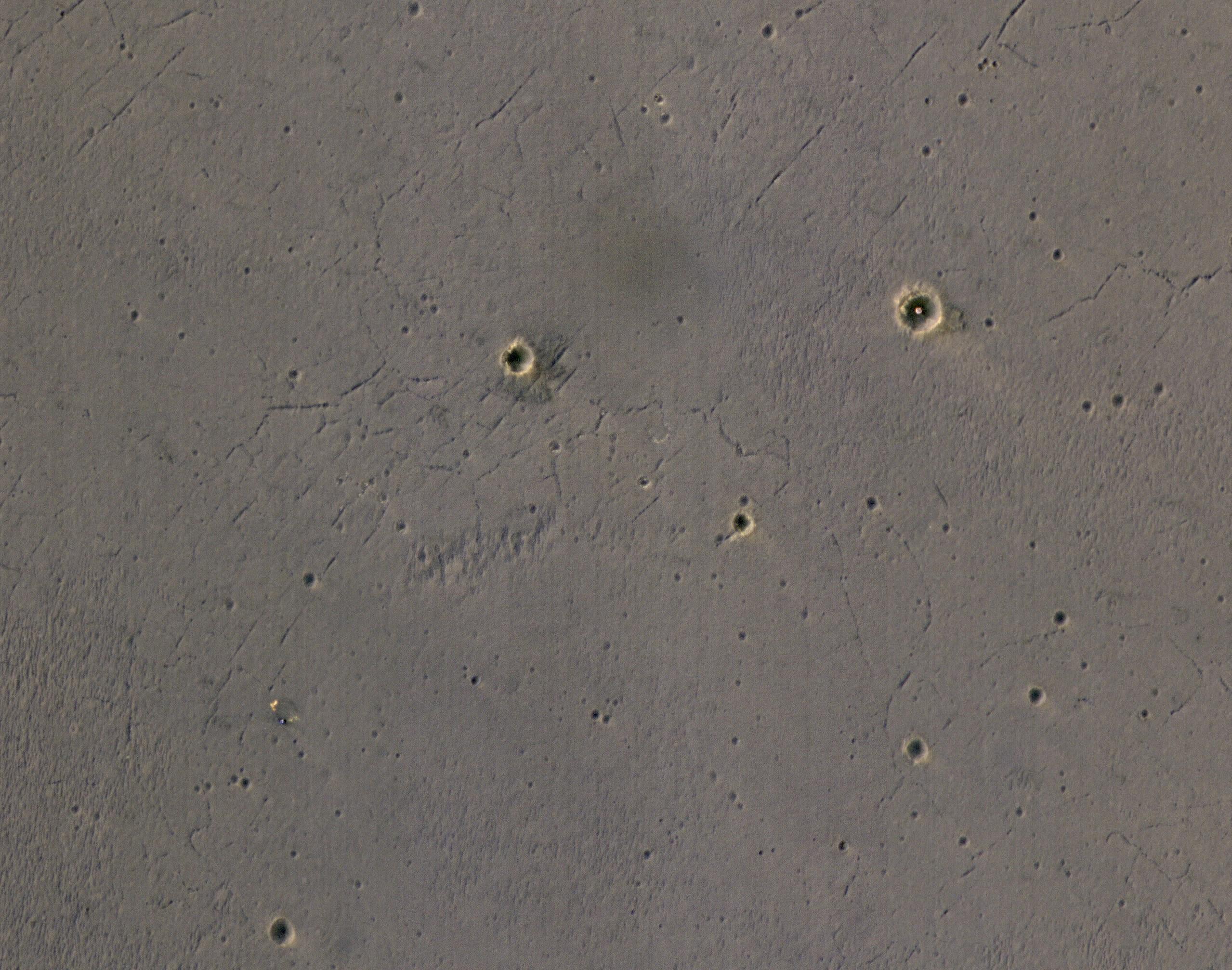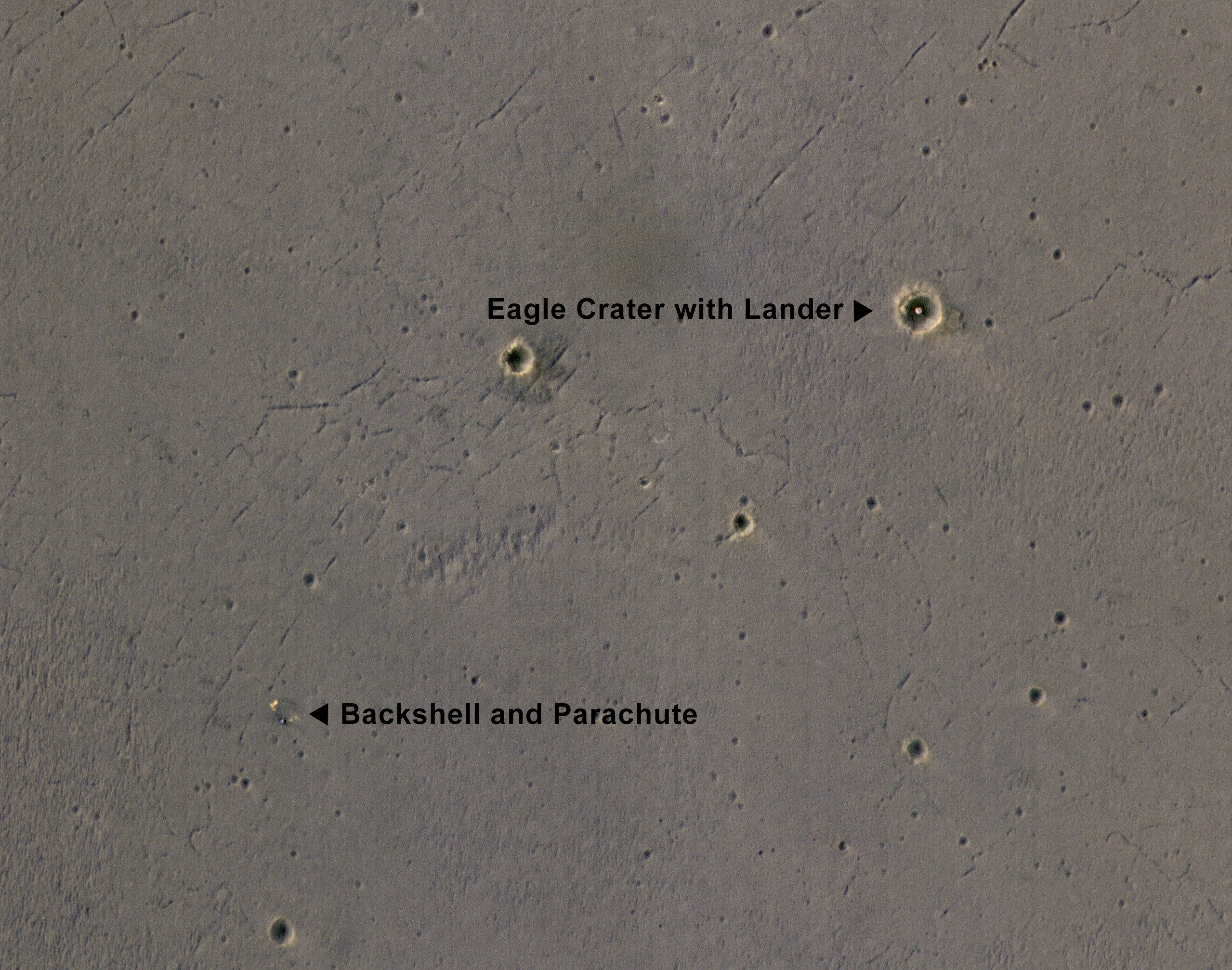Hole in One! Mars Orbiter Spies Opportunity Rover's Crater Landing Site (Photo)

A new photo shows just how improbable the Mars rover Opportunity's January 2004 hole-in-one landing really was.
The image — which was taken on April 8 of this year by NASA's Mars Reconnaissance Orbiter (MRO) — shows Opportunity's landing platform resting inside Eagle Crater. Opportunity came to rest inside the 70-foot-wide (22 meters) crater after a series of airbag-cushioned bounces and rolls during its Red Planet touchdown on the night of Jan. 24, 2004.
Mission planners were not aiming for the crater; their goal was to get Opportunity down within a "landing ellipse" that measured about 37 miles long by 2.4 miles wide (60 by 4 kilometers). Eagle was within that ellipse, and the rover just happened to wind up there. [13 Years On Mars! NASA Opportunity Rover Still Rolling (Video)]
"The smattering of small craters on a broad plain is a reminder of the amazement expressed in 2004 about Opportunity achieving a 'hole-in-one' landing," NASA officials wrote in an image description Friday (April 21).
"When the lander's petals opened and Opportunity sent home its first look at its surroundings, it provided the first-ever close-by view of sedimentary rocks on Mars, in Eagle's rim," they added.

The new MRO photo features Opportunity's parachute and backshell as well, at lower left. But the rover itself is not visible, because Opportunity has made serious tracks over the past 13 years. The six-wheeled robot has logged more than 27 miles (44 km) on the Martian surface, in fact — more than any craft has ever traveled on a world beyond Earth.
Opportunity reached the 14-mile-wide (22 km) Endeavour Crater in August 2011 and has been exploring the crater's rim ever since. It's now rolling south toward an east-west feature mission scientists are calling "Perseverance Valley."
Get the Space.com Newsletter
Breaking space news, the latest updates on rocket launches, skywatching events and more!
Opportunity landed a few weeks after its twin, Spirit, touched down on a different part of Mars. Both rovers were tasked with 90-day missions to hunt for signs of past water activity on the Red Planet.
Both golf-cart-size robots found plenty of such evidence, and then kept rolling along. Spirit stopped communicating with its handlers in March 2010 after getting bogged down in a sand trap. Mission controllers declared Spirit dead a year later.
Opportunity is still in generally good health, despite a few issues with its memory and robotic arm, NASA officials have said.
MRO arrived at the Red Planet in March 2006, about two years after Spirit and Opportunity. For the past 11 years, the orbiter has been studying Martian climate and geology, looking for evidence of past water activity, scouting out potential landing sites for future missions and helping relay data home from rovers such as Spirit, Opportunity and the car-size Curiosity, which touched down in August 2012.
Follow Mike Wall on Twitter @michaeldwall and Google+. Follow us @Spacedotcom, Facebook or Google+. Originally published on Space.com.
Join our Space Forums to keep talking space on the latest missions, night sky and more! And if you have a news tip, correction or comment, let us know at: community@space.com.

Michael Wall is a Senior Space Writer with Space.com and joined the team in 2010. He primarily covers exoplanets, spaceflight and military space, but has been known to dabble in the space art beat. His book about the search for alien life, "Out There," was published on Nov. 13, 2018. Before becoming a science writer, Michael worked as a herpetologist and wildlife biologist. He has a Ph.D. in evolutionary biology from the University of Sydney, Australia, a bachelor's degree from the University of Arizona, and a graduate certificate in science writing from the University of California, Santa Cruz. To find out what his latest project is, you can follow Michael on Twitter.
